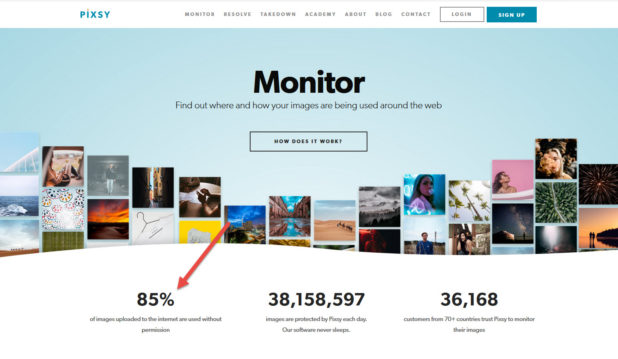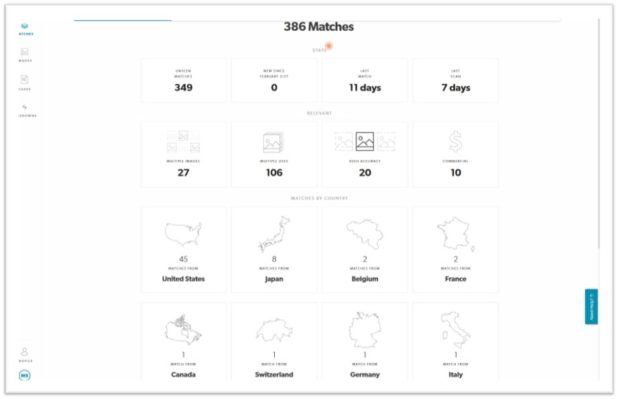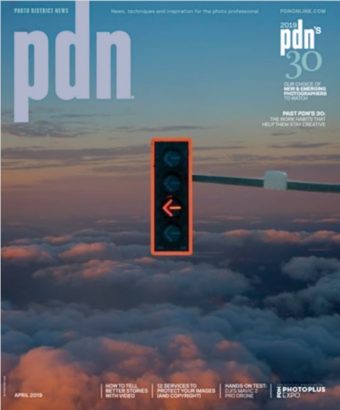Is your photographer registering?
Copyright Registration 2019
(If not, you are at risk!)
Creator and Author: Mike Boatman 2019
Disclaimer: I am a photographer, and I am writing about my personal experiences and opinions. I am not an attorney. This is not legal advice.
Copyright registration 2019: The world has changed!
The majority of infringements being detected by scanning services like Permission Machine, Pixsy and others are indicating that the infringers are third parties who are unrelated to the assigned client or the photographer. If you think shoplifting is a problem, consider knockoffs of your product being sold using your actual advertising. Plus, it can get worse! See webmaster example below:
Authorized usage, One of my clients, Tim DiSalvo, in Memphis TN is a very high-end contractor that specializes in remodeling.

Image as deposited with the Copyright Office under certificate number VA 2-007-621
Unauthorized usage, Mark Odd is also a contractor that specializes in remodeling in Broward County, Florida.

Unauthorized usage of images, also claiming that this is his construction work and part of his portfolio of projects.
Copyright registration is a huge hammer of protection. If photo images are not registered, you do not have protection.
Before some photographer yells bullsh*t, “The images are copyrighted the moment that they are created.” Which is true … in name only.
If the images are not registered with the Copyright Office by federal statute and recently upheld by the Supreme Court, the copyright holder is barred from filing litigation. In layman’s terms, realistically you have no leverage or legal means to pursue compensation for the theft and damages caused by the third-party thief.
For clarity, there is one tool you can use if the images are not registered: DMCA Takedown. This allows you to force the web hosting company (e.g. Go Daddy) to remove the image from the infringer’s website. There is no monetary compensation if you use a DMCA Takedown. Unfortunately, you are simply out-of-pocket for any of the damages that have occurred because of the infringement.
DMCA has other teeth that in some cases, in my opinion, are far stronger than the 1976 copyright law. However, in order to use these other options, you must file a copyright lawsuit. Of course, unfortunately, you are barred from filing a lawsuit if the images are not registered.
If the images are registered, there are numerous tools at your disposal to limit damages both for you and your client. Using the full weight of copyright law coupled with the full weight behind the DMCA, which is part of copyright law as of 1996, you will be able to seek compensation for the damage that has been done.
In 2019, this protective copyright registration umbrella isn’t just for the photographer anymore. Let me explain why.
If the photographer maintains copyright ownership and manages usage rights, which is the standard business model for commercial photography, the only person with legal standing is the photographer (copyright owner). Under this business model, your clients do not have legal standing to defend themselves under copyright law. In my opinion, if the photographer maintains ownership of his copyrights and leases usage rights, he/she has an ethical responsibility to defend their clients from third-party thieves. Without copyright registration, photographers do not have the ability to defend themselves, much less their client.
I would go as far as to say that if you maintain ownership and lease usage rights, it could be argued that failure to register your images demonstrates a degree of negligence.
Clients, I will ask the question again, “Is your photographer registering their images?”
According to Pixsy.com, 85% of all images on the Internet will be used without authorization. Image Rights went a step further and stated 100% of images will be used without authorization by multiple infringers.
According to the image protection services it’s not a matter of if. It’s not even a matter of when; it’s just you haven’t looked.

Michael Masterson, Director of North American sales for Permission Machine responding to a question that I asked him concerning current trend of third-party infringements. His full written response is included below; highlights are added by me:
Hi Mike,
I said I’d get this to you today so I’m still under the wire!
Permission Machine has seen a huge increase in third-party infringements. It’s like whack-a-mole. I’ll give you a good example. One of our photographers shot for a major national healthcare company. Their original license permitted the corporation to use the images for in-house, direct mail and web. Once their license expired he gave the images to Getty where an image of a senior woman running in a park was licensed to the Huffington Post and WebMD. He thinks it was probably also housed on the healthcare company’s backend server licensing entity.
The original infringements and third-party uses exploded from the licensed image. People trolling for imagery also happen upon the backend server and grab the image. We have found literally hundreds of infringements both here and abroad. It was even stolen by a Chinese pornography site from an infringer here in the States! But here’s the kicker and the lesson he learned. Although he registers regularly now, he didn’t start until 2013 or register this image until 2015. That means that many of the infringements Permission Machine found cannot be pursued because of his late registration. You’d better believe he’s a convert to registration now.
I hope this helps with the post. Let me know if you need any more ammo.
Best,
Michael
I maintain my copyright ownership and lease usage rights. For my clients, I routinely review Internet findings by multiple third-party protection scanning services. When I find a blatant copyright infringement as shown below, my client doesn’t have to be bothered with dealing with infringements. I take care of it.


I can give numerous examples of my clients’ gratitude that I protected their interest. Here is one of the more egregious examples. This is how it can get much worse.
My client a webmaster / web developer called me. She explained in a very agitated state that her client was extremely upset because someone had ghosted their entire website. Business inquiries and opportunities were going to the ghost site. Worse yet, the ghost site was set up to damage the reputation of the legitimate site. Inquiries that came into the ghost site were being responded to with inappropriate language that didn’t address the inquiry but belittled the inquirer.
Orders were going unfilled. Concerned customers that were inquiring about their missing orders were being met with more inappropriate, belittling language. This had been going on for almost a month before the legitimate business owner discovered the ghost site.
The most expedient tool to limit the damage instantly was the DMCA Takedown. However, in order to send a DMCA Takedown to the hosting company, you must warranty under penalty of perjury that you are the legal copyright owner.
In this particular case, the webmaster had taken her own photographs and only called me for advice and help. I assisted in putting a DMCA Takedown together with her and she sent it out that same day. The ghost website was removed within hours. But the webmaster had not registered the images. Therefore, they did not have access to statutory damages and attorney fees to try to recover damages caused by the ghost website. At that point, all they could do was seek damages through civil court or post-register the images and seek actual damages through copyright law. In either case, the plaintiff party would have to pay legal fees to their attorney.
If the images had been registered, many attorneys will take copyright cases on a contingency basis.
Clients, before you go to, “We will just purchase the image ownership,” you’re not in a position to defend copyrights effectively. The reason I say this is because some infringers are more arrogant than stupid. The infringer will sometimes force the filing of a copyright litigation before they’ll compensate for the damages that they’ve caused. Once it goes to litigation you truly are dealing with proving a chain of evidence custody of the image.
It’s best for the photographer to deal with the infringements because we have all the proper tools to verify the image. It’s built into our archiving systems and cameras to record the date of creation and Meta Data. As the photographer, we are the originating author or copyright owner with the tools to prove a chain of custody from the creation to the infringement.
Most trained photographers work in a nondestructive manner or in layman’s terms, the original raw image remains intact, un-changed from when it was created in the camera with its original metadata. This establishes the creation date of the image and is indisputable. All the nuances to prove ownership and the nuances of copyright are already part of our working protocols. Besides, why take on the burden of legalities when you can outsource it to the photographer?
As the client, your goal is to stop a third party from damaging your profit and/or your reputation. Photographers can handle all of that for you, but only if they are registering their images.
At this point you may be asking yourself, “Why would a photographer take on the burden?” Good question! Let me answer that for you:
When your company is being damaged, so is the photographer.
You’re losing sales and/or damage to your reputation, and this also affects the photographer.
The photographer is losing usage fees. When they priced out the work for you it was based on a single user, not multiple users. This is a license fee the photographer is missing out on.
A photographer’s reputation can also be damaged if he made the license to the company as exclusive for their use only which would be standard if the product is proprietary.
If we change the risk/reward ratio for infringements, then there would be less theft and more paid assignments because the demand for imagery is not going to decrease. I believe this is only going to occur if more photographers register their work and enforce their copyrights.
Meanwhile, our clients are also being damaged. As the client, you commissioned the photography and now some third-party is using it without having paid a dime, riding on your coattail. It’s quite possible this third-party is a competitor or a startup. The infringer is reaping rewards from an assignment you paid for.
What if there’s a model involved in a lifestyle photo? Now you’ve got model releases and privacy rights to deal with. What if the model is a celebrity that sells endorsements to the use of their image or name? This was the case on one of my assignments for Motorola.
I don’t know what will ultimately turn the tide of infringements, but I do know it starts with copyright registration.
I recently gave a presentation at the Chicago chapter of APA. The working title was A Bulletproof Copyright Registration. But as we all know there’s no such thing as bulletproof, so I changed the title to An Accurate Copyright Registration. During the presentation I made a link available to all the attendees to my copyright workflow for published registrations. An accurate registration is a process by which you’re building a custody chain of evidence for the federal court system.
Here’s the link so that you can download, free of charge, the workflow that I gave to APA members.
https://www.dropbox.com/sh/z6pepwty2agqxf9/AAAoSAel2VJ0Fsa2eqgb6ULwa?dl=0
There are two PDFs: one has screenshots and the other one doesn’t. Even though it’s my workflow, I still use the PDF as a guide every 60 days when doing my registrations. Once you do the first one using the screenshots, you will probably abandon it like I have, but continue to use the second.
Your photographic workflow will determine if registration is easier for you before publication or after. The critical thing is to be accurate. If the images are published, they need to be registered as published. If they are registered as unpublished you need to make certain that your workflow supports registration prior to them legally being published. The legal definition and the layperson’s definition of published are different.
For me it’s easier to register all my works every 60 days as published. There are small advantages to registering unpublished. This would require that you register the works prior to delivery or distribution to the client or even before uploading to a website for viewing with the intent of further distribution or sales. Typically, you would have to register every assignment individually before delivery. This simply will not work for me. But if it works for you, by all means … it’s best to register prior to publication. Having said that, it really doesn’t matter as far as the level of protection if they are registered published or unpublished, provided that the registration is accurate.
The legal definition of published as provided by the copyright office:
https://www.copyright.gov/help/faq-definitions.html
Publication has a technical meaning in copyright law. According to the statute, “Publication is the distribution of copies or phonorecords of a work to the public by sale or other transfer of ownership, or by rental, lease, or lending. The offering to distribute copies or phonorecords to a group of persons for purposes of further distribution, public performance, or public display constitutes publication. A public performance or display of a work does not of itself constitute publication.” Generally, publication occurs on the date on which copies of the work are first made available to the public.
If you have a copyright infringement issue, please know that not all attorneys are created equal. Copyright law is liquid … changing constantly in the nuances based on case law. You need to seek the advice of an IP visual arts attorney. Patent attorneys are classified as IP attorneys as well, but in my opinion, they may not be the best for visual arts. There’s enough nuance difference between patent and visual arts to seriously impact a photographer’s case.
If you have questions, feel free to contact me! I’m happy to give you my photographer’s opinion.
Note: PDN wrote a very nice article in April 2019 issue listing 12 protection services titled, “Image Protection Services for Professional Photographers” by Greg Scoblete
You can find it here, PDNOnline.com and a direct link to the article is http://digitalmag.pdnonline.com/pdnonline/april_2019/MobilePagedReplica.action?pm=2&folio=82#pg84
© Emerald Expositions 2019


This is a real eye-opener, Mike. Thanks for sharing your insights!